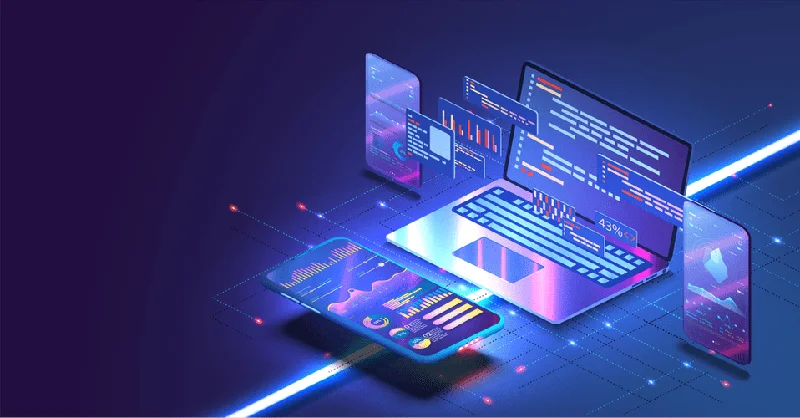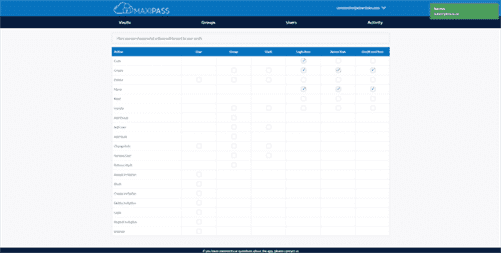Shape Up is a two-track system where shapers and builders work in parallel. Work that is being shaped in the current cycle may be given to designers and engineers to build in a future cycle. Continuous integration is the practice of merging all developer working copies to a shared mainline several times a day.[5] Grady Booch first named and proposed CI in his 1991 method,[6] although he did not advocate integrating several times a day.

The project manager is responsible for executing and closing all the linear steps of planning, building, and maintaining the new or improved system throughout the process. Systems analysis and design (SAD) can be considered a meta-development activity, which serves to set the stage and bound the problem. Architecture, and business architecture, and relies heavily on concepts such as partitioning, interfaces, personae and roles, and deployment/operational modeling to arrive at a high-level system description.
1 System Development Life Cycle Methodologies to Consider
Composite AI refers to the fusion of different AI techniques to improve the efficiency of learning and broaden the level of knowledge representations. Since no single AI technique is a silver bullet, composite AI ultimately provides a platform to solve a wider range of business problems in a more effective manner. Once a system has reached the point at which formal system operations is to end, a set of steps should be undertaken to move data to a new system, dispose of outdated equipment, and cancel service contracts. In some agencies, contracts may be managed centrally and the need to cancel the contract may be overlooked, resulting in unneeded expense.

The software development lifecycle (SDLC) methodology provides a systematic management framework with specific deliverables at every stage of the software development process. As a result, all stakeholders agree on software development goals and requirements upfront and also have a plan to achieve those goals. SDLC methodologies fit within a flexibility spectrum ranging from agile to iterative to sequential. It’s when you gather the team to brainstorm, set goals, and identify risks.
Iterative Model
Software development life cycle is a very similar process to systems development life cycle, but it focuses exclusively on the development life cycle of software. With its customizable spreadsheet interface and powerful collaboration features, Smartsheet allows for streamlined project and process management. Use Smartsheet’s SDLC with Gantt template to get started quickly, and help manage the planning, development, testing, and deployment stages of system development. Create a timeline with milestones and dependencies to track progress, and set up automated alerts to notify you as anything changes. Share your plan with your team and key stakeholders to provide visibility, and assign tasks to individuals to ensure nothing slips through the cracks.

The software development lifecycle (SDLC) is the cost-effective and time-efficient process that development teams use to design and build high-quality software. The goal of SDLC is to minimize project risks through forward planning so that software meets customer expectations during production and beyond. This methodology outlines a series of steps that divide the software development process into tasks you can assign, complete, and measure. The SDLC is widely used in industry for information system design and implementation. The system development life cycle is a project management model that defines the stages involved in bringing a project from inception to completion.
Incremental development
Developers are now responsible for more and more steps of the entire development process. When development and Ops teams use the same toolset to track performance and pin down defects from inception to the retirement of an application, this provides a common language and faster handoffs between teams. ” This phase of the SDLC starts by turning the software specifications systems development cycle into a design plan called the Design Specification. All stakeholders then review this plan and offer feedback and suggestions. It’s crucial to have a plan for collecting and incorporating stakeholder input into this document. Failure at this stage will almost certainly result in cost overruns at best and the total collapse of the project at worst.

This high-risk SDLC model throws most of its resources at development and works best for small projects. It lacks the thorough requirements definition stage of the other methods. An extension of the waterfall model, this SDLC methodology tests at each stage of development. Popular SDLC models include the waterfall model, spiral model, and Agile model. Before releasing the mockups into final production, you’ll need to test it to ensure it is free of bugs and errors. You’ll also need to manage how the system will integrate into existing systems, software, and processes.
stages of the software development life cycle
Software development teams, for example, deploy a variety of techniques that include waterfall, spiral, and agile processes.3 In this column, the SDLC is reviewed with particular emphasis on use in public health agencies. Each phase includes a set of major activities; exit criteria are used to determine whether the team can move on to the next phase. Use of the SDLC model serves as a roadmap for information system development; its use also helps to avoid costly mistakes. The systems development life cycle (SDLC) is a conceptual model used in project management that describes the stages involved in an information system development project, from an initial feasibility study through maintenance of the completed application. In most use cases, a system is an IT technology such as hardware and software. Project and program managers typically take part in SDLC, along with system and software engineers, development teams and end-users.
Developers create a version very quickly and for relatively little cost, then test and improve it through rapid and successive versions. One big disadvantage here is that it can eat up resources fast if left unchecked. This allows any stakeholders to safely play with the product before releasing it to the market. Besides, this allows any final mistakes to be caught before releasing the product. Next, let’s explore the different stages of the Software Development Life Cycle.
Waterfall Model
The works of the Frankfurt School are understood in the context of the intellectual and practical objectives of critical theory. Security is critical – especially when the purpose of the system development life cycle is to create software. Software is the most-attacked part of the security perimeter, and more than half of all successful security breaches begin with an attack on an application.
- In other words, the team should determine the feasibility of the project and how they can implement the project successfully with the lowest risk in mind.
- System assessments are conducted in order to correct deficiencies and adapt the system for continued improvement.
- Iterative, rapid application development offers so much flexibility that you run the risk of never completing your project.
- During this step, current priorities that would be affected and how they should be handled are considered.
- SDLC works by lowering the cost of software development while simultaneously improving quality and shortening production time.
ALM includes the entire lifecycle of the application and continues beyond SDLC. The waterfall model arranges all the phases sequentially so that each new phase depends on the outcome of the previous phase. Conceptually, the design flows from one phase down to the next, like that of a waterfall. In the design phase, software engineers analyze requirements and identify the best solutions to create the software. For example, they may consider integrating pre-existing modules, make technology choices, and identify development tools.
1.2 About the Advantages of Creating Prototypes
The term software development lifecycle (SDLC) is frequently used in technology to refer to the entire process of technology innovation and support. When teams develop software, they code and test on a different copy of the software than the one that the users have access to. The software that customers use is called production, while other copies are said to be in the build environment, or testing environment.